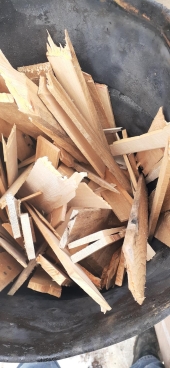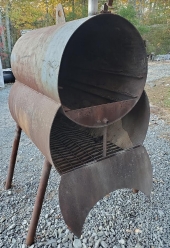
 9
9




A build too cool to miss:Mike's GreenhouseA great example:Joseph's Garden
All the soil info you'll ever need:
Redhawk's excellent soil-building series





 4
4




A build too cool to miss:Mike's GreenhouseA great example:Joseph's Garden
All the soil info you'll ever need:
Redhawk's excellent soil-building series





 1
1




 6
6




I hear you Trace - there are projects I'd like to have done 5 years ago, but there are always higher priorities.Trace Oswald wrote:LOL, had to add, I looked at my old posts and saw that I first posted about having this idea 8 months ago. I finally got around to trying it. That pretty much tells you how things go on my land.
Visit Redhawk's soil series: https://permies.com/wiki/redhawk-soil
How permies.com works: https://permies.com/wiki/34193/permies-works-links-threads
 9
9




 2
2




Forever creating a permaculture paradise!
 4
4




Douglas Alpenstock wrote:Finding new ways to manage raw char is magnificent and worthy. Well done!
In my part of the world, I use the natural freeze/thaw cycle to my advantage. Char saturated with moisture will expand and shatter over time. This is the same system that grinds mounains into plains. It's not fast, but my char system is pretty lazy, so I assume (based on experience) that it will work out over time.
Michelle Heath wrote:
So glad it worked for you.
Some of my best ideas brewed in my mind for years before the "light bulb" moment of exactly how I could make it work suddenly materialized.

A build too cool to miss:Mike's GreenhouseA great example:Joseph's Garden
All the soil info you'll ever need:
Redhawk's excellent soil-building series





 4
4




Moderator, Treatment Free Beekeepers group on Facebook.
https://www.facebook.com/groups/treatmentfreebeekeepers/





 3
3




 4
4




Moderator, Treatment Free Beekeepers group on Facebook.
https://www.facebook.com/groups/treatmentfreebeekeepers/









 3
3




Check out Redhawk's soil series: https://permies.com/wiki/redhawk-soil
 1
1




A build too cool to miss:Mike's GreenhouseA great example:Joseph's Garden
All the soil info you'll ever need:
Redhawk's excellent soil-building series






| I agree. Here's the link: http://stoves2.com |





